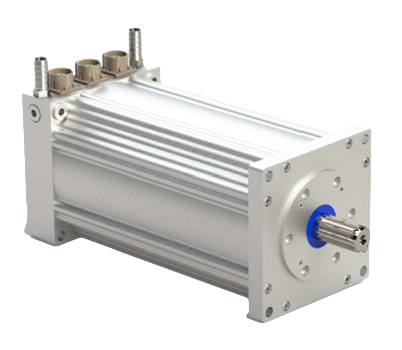An Overview of Marine Electrification

An Overview of Marine Electrification
While it’s true that water and electricity don’t traditionally mix, engineers in the marine sector have come to the realization that fast-tracked electrification technology is the key to a more sustainable and efficient future for maritime operations. The marine industry faces significant challenges related to environmental impact and fuel efficiency, driving the need for innovative solutions.
Marine electrification addresses these challenges by offering high performance, eco-friendly alternatives to traditional fuel-powered engines. Imagine more speed, less pollution, all wrapped up in a sleek electrified package. Electric powertrains are capable of surpassing many of the dirty gas-guzzlers propelling current powerboats, begging the question – what exactly is marine electrification?
Charting a Course Towards a Sustainable Maritime Future
The excitement felt while skipping over the waves in a powerboat is palpable. The water spray soaks the skipper of the craft, head-back, adrenaline-drunk with the thrill of the experience. Yet that feeling is tempered somewhat by a spill of fuel. iNetic’s powertrain solutions keeps that giddy feeling intact, eliminating the environmental impact. That’s the advantage provided by marine electrification, a technology with all of the benefits of fuel-powered engines but none of the drawbacks. In other words, enjoy the adrenaline of hydro-dynamic propulsion without any threat of accompanying oceanic or lake pollution.
If the benefits of this design aren’t immediately clear, consider the iEV Motor Range. When combined with a gearbox solution, it provides optimal performance for a range of different marine crafts. The motors are engineered to be futureproof, meaning a seamless shift away from loud and dirty fossil fuel outboards. They are also remarkably efficient and versatile, as evidenced by the 5kw to 300kw scalability index listed on their specs sheet. A compact, responsive marine motor for leisurely outings or a powerful engine for competitive racing, iEV has every conceivable application covered.
The excitement felt while skipping over the waves in a powerboat is palpable. The water spray soaks the skipper of the craft, head-back, adrenaline-drunk with the thrill of the experience. Yet that feeling is tempered somewhat by a spill of fuel. iNetic’s powertrain solutions keeps that giddy feeling intact, eliminating the environmental impact. That’s the advantage provided by marine electrification, a technology with all of the benefits of fuel-powered engines but none of the drawbacks. In other words, enjoy the adrenaline of hydro-dynamic propulsion without any threat of accompanying oceanic or lake pollution.
If the benefits of this design aren’t immediately clear, consider the iEV Motor Range. When combined with a gearbox solution, it provides optimal performance for a range of different marine crafts. The motors are engineered to be futureproof, meaning a seamless shift away from loud and dirty fossil fuel outboards. They are also remarkably efficient and versatile, as evidenced by the 5kw to 300kw scalability index listed on their specs sheet. A compact, responsive marine motor for leisurely outings or a powerful engine for competitive racing, iEV has every conceivable application covered.
Growing Trend Towards Electrification in the Maritime Industry
Easy though it would be to dedicate this entire post to a single high-performance electric propulsion series with a bias towards clean, scalable power, let’s talk about the general future of the marine electrification industry. Quoting the hard figures, market growth estimates predict a healthy uptick, reaching somewhere around USD 10.7 billion by 2030 (1). At 6 years away, that’s a massive leap from where we’re at today.
Projections from other sources support this scenario. For instance, population growth and crowded waterways are likely to lead to more restrictive sustainability solutions, pushing towards a cleaner boating experience for all. While some may expect a matching restriction on power output and powerboating speed, the newest generations of electric motors are bucking expectations by offering increased power and speed without the harmful emissions associated with traditional engines.
Riding the Tide of Electrified Change

Riding the Tide of Electrified Change
In closing, many of the big players in the marine engine sector are seeing the winds of change, and those winds are pointing towards electrification. Full electric is still the optimal design choice due to its ability to completely eliminate emissions, reduce operational costs, and provide a quieter and smoother boating experience but there are other electrified powertrain solutions such as a hybrid solution. This helps reduce range anxiety while offering benefits like running fully electric in marine environments or achieving better efficiency from the generator by operating at optimal speed and power points.
Proudly joining this headlong rush towards excelling in all things electrically propelled in marine industry applications, iNetic is heavily endorsing our own iEV, sEV and rEV motor range (2), which is set to redefine the standard for electric hydro-thrust, courtesy of our modular-capable designs. With our advanced technology, the future of marine electrification is already here, offering immediate solutions for a sustainable maritime industry.
(1) Electric Boat Market Set to Reach USD 10.7B by 2030 (statzon.com)
(2) Products – iNetic Traction
Written by David Gardner